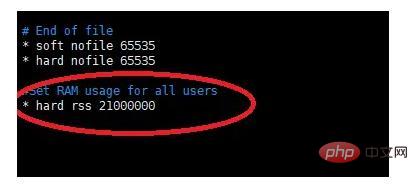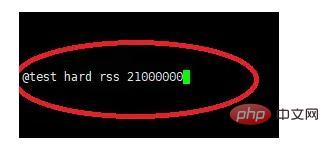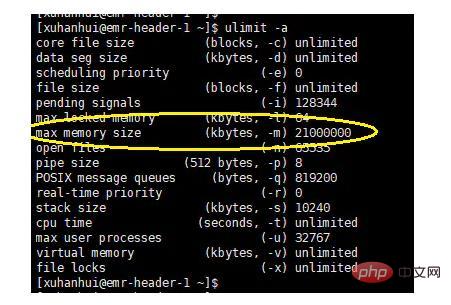
Linux user memory is limited. The method of limiting user memory in Linux is: 1. Enter the file through the "sudo vim /etc/security/limits.conf" command; 2. Use "@test hard rss 21000000 "The command limits the memory usage of a user's test to no more than about 20G.

#The operating environment of this tutorial: linux5.9.8 system, Dell G3 computer.
Will Linux user memory be limited?
meeting.
Linux limits users’ disk space and memory usage
1. How to limit users’ disk space
1. View the disks of all users in the system Space quota
sudo repquota /dev/vda1
2. Check the disk space quota of a certain user
sudo edquota user_name
If you want to change the disk space quota of the user, directly modify the soft and hard behind the blocks field in the pop-up file. The value of the field is enough. For example, in the figure below, the value of the soft field is set to 2097152 (that is, 2G), and the value of the hard field is set to 3145728 (that is, 3G). This setting means that the system will allow you to set the time within a certain period of time (time setting (See Section 4 below) the disk space exceeds 2G, but you must reduce the disk space to less than 2G before the deadline; but in any case, your disk space cannot exceed 3G. This is what soft and hard mean. It should be noted that the blocks and inodes fields do not need to be set. The values of these two fields are automatically given by the system.

#3. First set the disk space quota of a template user fanyiwei, and then assign its quota to the target user target_user_name. As long as you set the template quota once, this command will be the most commonly used in the future, which is very convenient.
sudo edquota -p fanyiwei target_user_name
4. Set the warning period
In the previous section 2, we set the soft upper limit (soft) and hard upper limit (hard) of the user's disk space. The hard upper limit is an upper limit that is absolutely not allowed to be exceeded, such as the 3G set above; the soft upper limit allows you to exceed the limit in a short period of time, but there is a deadline, which is the warning period. The default setting of the warning period is 7 days, but you can use the following command to modify it
sudo edquota -t
After running, the following file will pop up, and then just modify it. For example, the picture below sets the warning period to 3 days.

2. How to limit the user’s memory usage
1. First use the following command to enter the file
sudo vim /etc/security/limits.conf
After entering, if you want To limit the memory usage of each user to no more than about 20G, add the following statement at the bottom
* hard rss 21000000

If you want to limit the memory usage of a certain user test It cannot exceed about 20G, you can add the command
@test hard rss 21000000

in the figure below to explain. The four fields we wrote above mean: (1) Add * No. means it will work for all users, adding @test means it will only work for a user named test. (2) hard means a hard upper limit. You can also change it to soft, which is a soft upper limit. (3) RSS indicates that we are limiting the memory usage. (4) 21000000 (unit KB) indicates that the amount we limit is approximately 20GB.
2. After modifying the above file and saving it, we use the following command
sudo vim /etc/pam.d/login
to enter the file, add the following sentence at the bottom, and then save it.
session required /lib/security/pam_limits.so

3. Log out of the account and log in again. Use the following command to view the memory quota
ulimit -a
The result is as shown below

The above picture shows that we have successfully set the user's memory usage to 20G.
Related recommendations: "Linux Video Tutorial"
The above is the detailed content of Will Linux user memory be limited?. For more information, please follow other related articles on the PHP Chinese website!